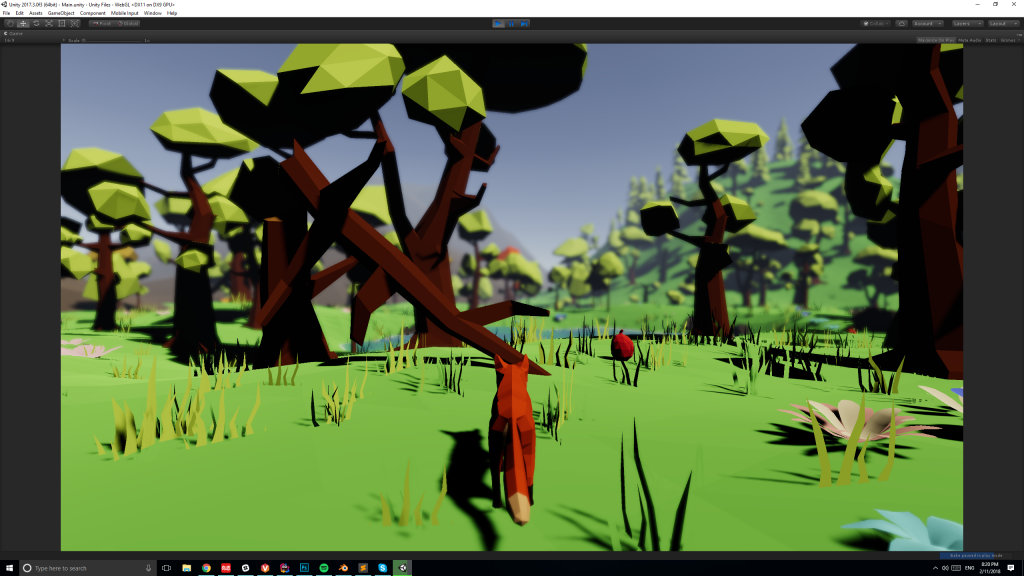
This week the team took our first definitive steps towards prototyping our allegorical forest game. Working off of what we learned last week, our artists and programmers developed a pleasing, tranquil, temperate deciduous forest biome for the game’s setting. It’s important to note upfront that any and all of this content is subject to change—possibly drastically—in the weeks ahead as we develop and test further, and receive feedback from the ETC faculty at the end of next week, the 25% mark in the project’s progress.
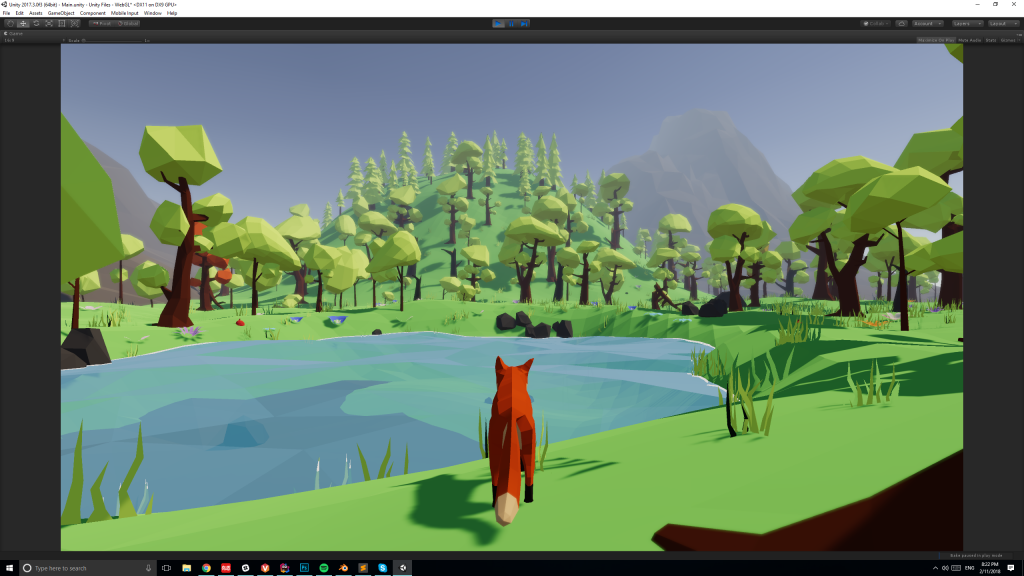
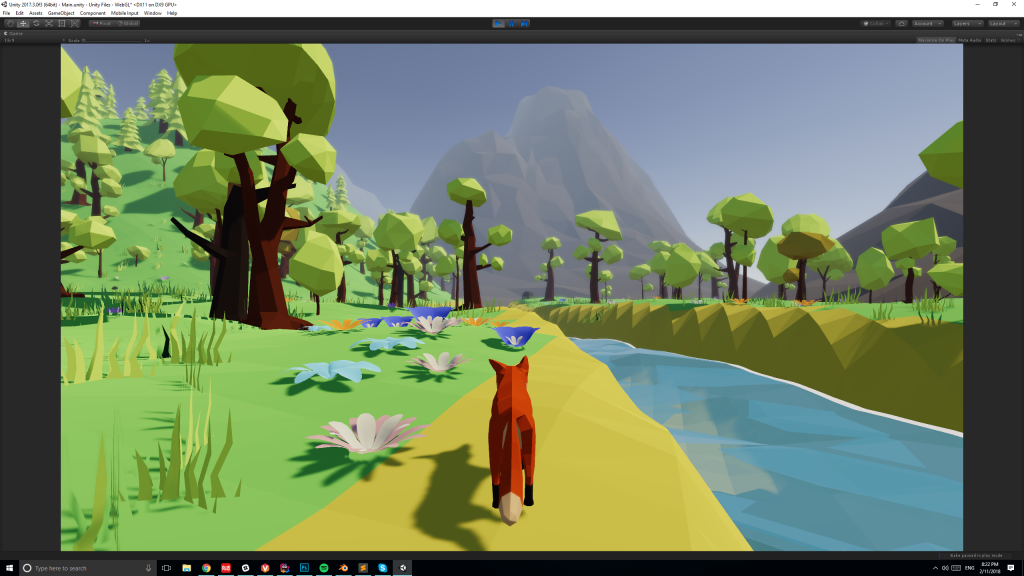
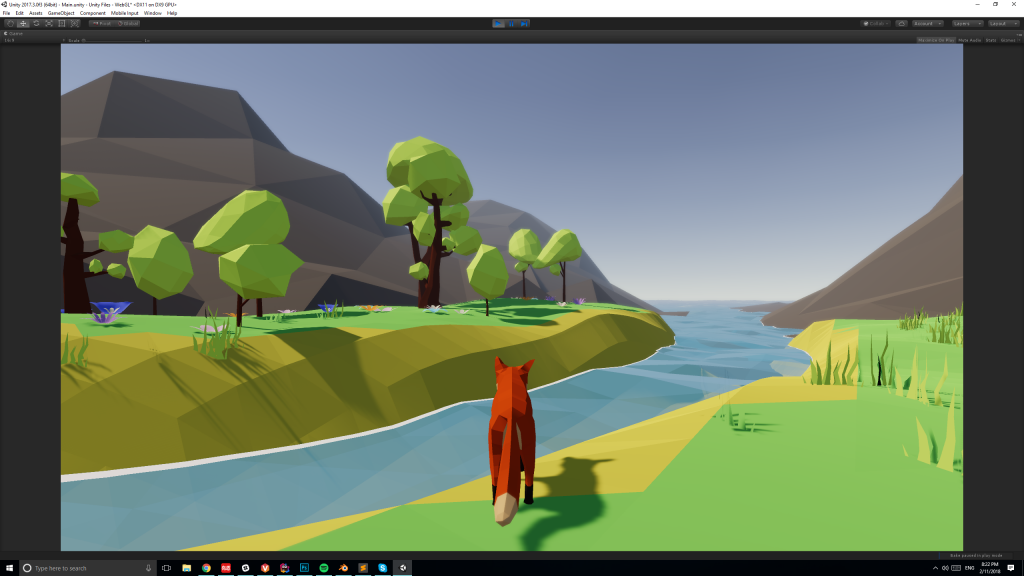
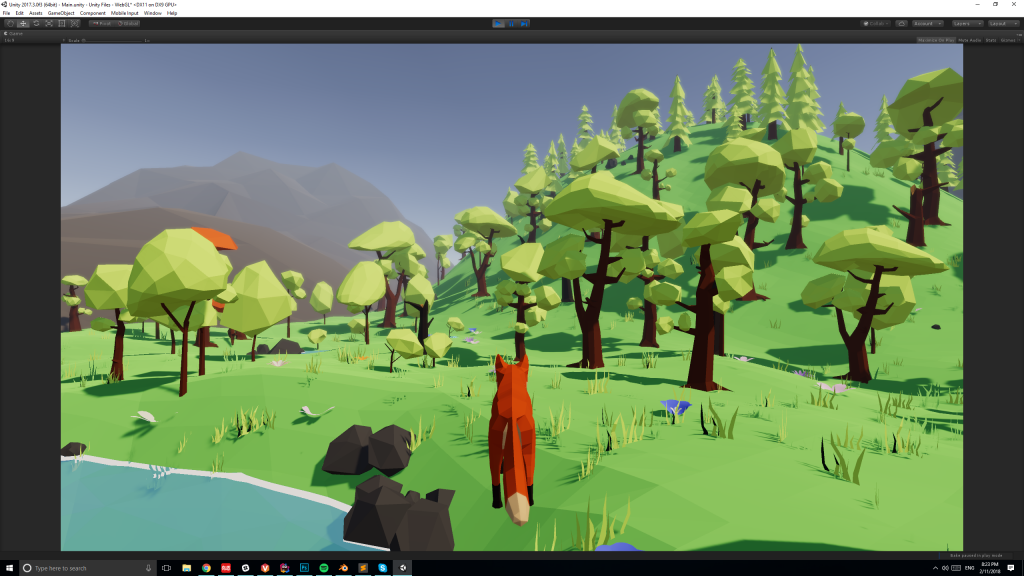
As you can see in the screenshots above, the team has been successful in creating an explorable 3D environment, as well as the basic gameplay mechanic of gathering objects (in this case, berries) in the world. This was accomplished using the Unity game engine, and the current prototype even features original music that Yutian (our team’s sound designer and composer) wrote.
All this visual and mechanical loveliness would do little to achieve our goals of autism empathy without a compelling reason for these animals to be running around, and to that end, we are developing the game’s story as well. As it stands, the basic premise is that the forest is in crisis from an impending catastrophic event, and it will require the cooperation of multiple animals of different species to band together and save their world. Diurnal animals will be more adept at working towards this goal during the daylight hours, and nocturnal animals will, in kind, be better suited to tasks under moonlight. The idea is that diurnal and nocturnal animals, while they are indeed different, realize that their differences are not as divisive as they may have previously thought, and gain a new understanding and respect for their circadian counterparts.
Our major concern, of course, is whether the allegorical approach will in fact be appreciated by our target audience. The children may enjoy the landscape, the animal characters, the game interactions, and even the story, and come away from the experience not having understood the metaphor. We believe that this game will likely include a lesson plan, either facilitated by a teacher or perhaps even within the game itself, to help reinforce the themes we are trying to hammer home.
Speaking of hammers, next week we will be meeting with our own ETC professor Jessica Hammer, who will guide us towards more focused playtesting, which will help us refine our prototype and make sure we’re on our way toward achieving our transformational goals. Excelsior!
